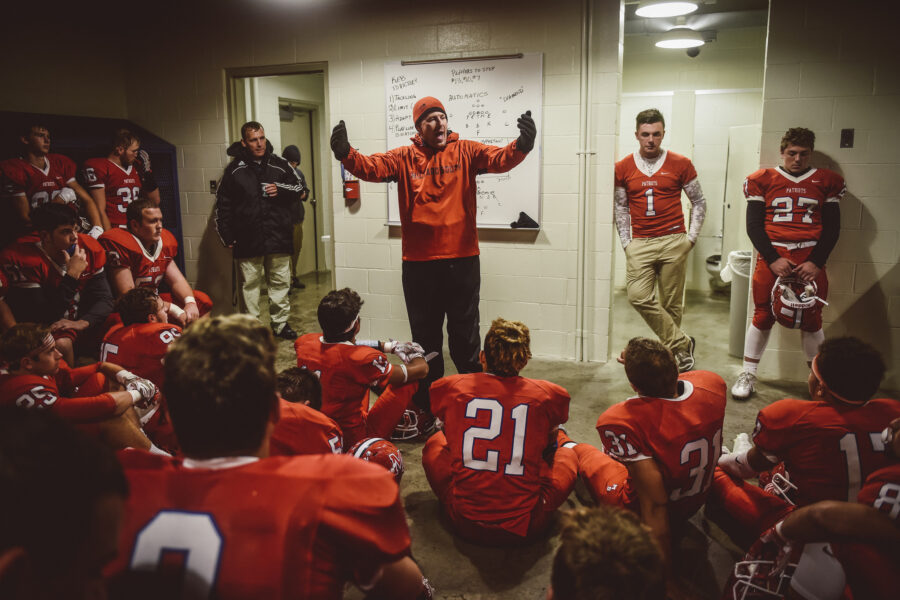It’s important to have a strong philosophy, but sometimes midseason adjustments must be made. Chris Fisher details how to do so.
Most coaches have a baseline coaching philosophy that shapes every part of their program. While it’s important to have a consistent system in place, sometimes a point in the season arrives when something needs to change.
Consider the makeup of your team. Can your players execute the offense and defense you desire? Does it give them the best opportunity to be successful? Do you have enough capable players to execute that style? These are the most important questions to answer when planning the system your program will use or if changes should be made to the current program.
The athletic ability of your players can be what promotes change. One season, we weren’t having much success with our gap scheme plays, but we were with our zone scheme plays. We closely examined our offensive line and realized we were playing some kids that couldn’t move well, so pulling and getting outside of their zone wasn’t playing to their strengths. Once we changed our focus to a zone and lead scheme, our running game took off. I fully believe our line was a huge factor in getting us to the semifinals that year. Instead of asking players to do something outside their skill set, look at your system and prepare to mold it to what they do best.
Your system needs to be flexible. You shouldn’t have to make wholesale changes to accommodate your roster, but you may need to refocus. Consider the offensive formations you use and move your best skill players around to increase opportunities to get the ball in their hands. The evolution of the quarterback is a direct result of the coach increasing touches for their best athletes.
If you’re struggling to get the ball to your best playmakers, perhaps a position change will create those opportunities. Consider being flexible in your tempo. If you’re an up-tempo team but your defense struggles to stop opponents, you may be able to improve your defense by slowing down your own offense. Slowing the pace gives your defense extra time to regroup and hash out their assignments as they prepare to return to the field.
Coaching and communication are paramount to a smooth transition as you change things up mid-season. Your system needs to already have the terminology built in to ensure the athletes understand what they’re being asked to do. This goes back to the flexibility of your system. You may want to be a power-I team and pound the ball. But if you have several playmakers at receiver, you should have the terminology to transition from the I-formation to spread formations and run an effective offense. Flexibility also makes it easy for your coaches to communicate and teach. The ability of your players to transition from one scheme to another relies on the teaching ability of the coaches.
Every decision you make should be focused on your athletes to give them the best opportunity to be successful on the football field. A midseason change may be just what the team needs to make a difference and help it turn the corner.
See how Hudl's data and reports can help you uncover tendencies and create a new game plan.
Chris Fisher is the offensive line coach for Ridge Point High School in Missouri City, Texas. He is a 17-year coach and member of the Texas High School Coaches Association. Fisher is also the founder of the Twitter chat network #TXHSFBCHAT. You can follow Coach Fisher on Twitter @coachfisher_rp and @TXHSFBCHAT. You can also learn more about #TXHSFBCHAT on his website txhsfbchat.com.

